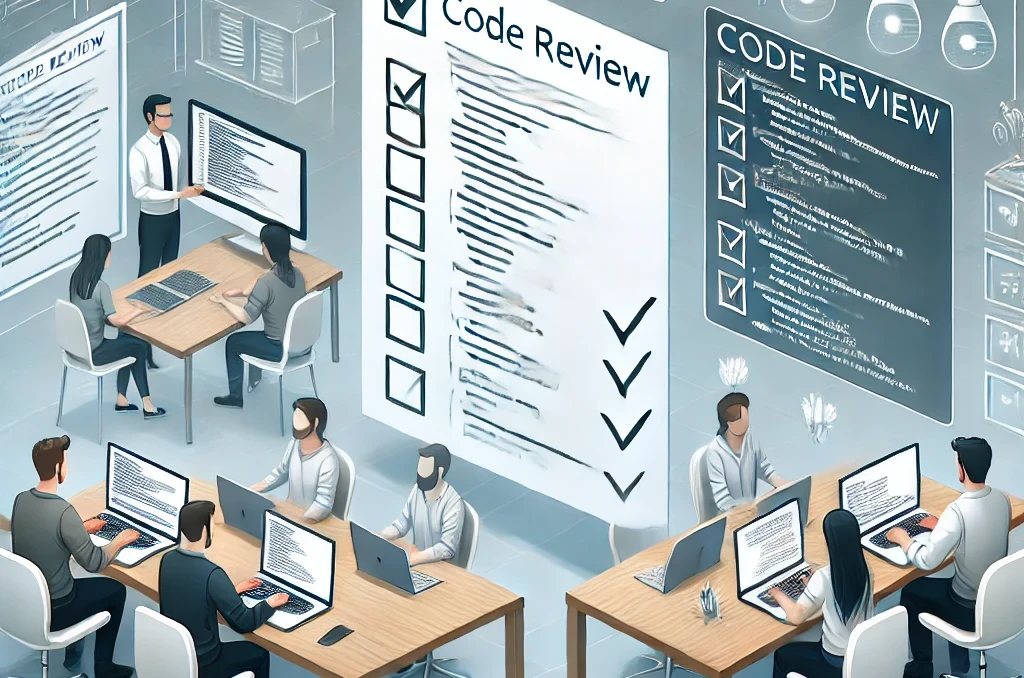
Code reviews are an essential part of the software development process. They ensure that code adheres to best practices, is maintainable, and works as expected. However, conducting an effective code review can be challenging, especially for teams balancing speed and quality. In this article, we’ll explore best practices for code reviews that can help you and your team improve code quality and foster better collaboration.
Why Are Code Reviews Important?
Code reviews help developers:
- Identify bugs early: Catching errors in code before it reaches production saves time and reduces costly fixes.
- Improve code quality: Reviews help ensure adherence to coding standards, maintainability, and readability.
- Knowledge sharing: Code reviews enable team members to learn from each other’s work and improve their understanding of the codebase.
- Team collaboration: It’s a great opportunity to collaborate, mentor, and keep the entire team aligned on coding practices.
1. Focus on the Big Picture, Not Just the Syntax
When conducting code reviews, it’s easy to get caught up in the details—variable names, formatting issues, or small coding quirks. While these things matter, the big picture is even more critical. Focus on:
- Architecture: Is the code designed in a way that scales well? Does it fit within the overall application structure?
- Logic flow: Does the logic make sense? Are there any redundant or overly complex operations that could be simplified?
- Performance: Will this code create performance bottlenecks? Could it be optimized for speed or memory usage?
By focusing on these high-level concepts first, you can ensure the code works as intended without being distracted by minor issues.
2. Be Kind and Constructive with Your Feedback
Giving feedback is one of the most important—and sometimes difficult—parts of code reviews. It’s important to keep the following in mind:
- Avoid criticizing the developer, critique the code: Say, “This approach could be improved by…” instead of “You did this wrong.”
- Praise where appropriate: Positive feedback on clean code or a smart solution goes a long way in building team morale.
- Be specific: Instead of saying, “This doesn’t look right,” explain why something might be a concern. For example, “This loop might cause a performance issue when handling large data sets.”
The goal is to create a collaborative and supportive environment where everyone can improve.
3. Use Tools to Automate Tedious Parts
Automated tools can handle many of the repetitive and objective parts of a code review, such as:
- Linting and style enforcement: Use tools like ESLint, Prettier, or RuboCop to catch styling issues.
- Unit testing: Ensure all tests pass before even starting a review. CI tools like Jenkins, CircleCI, or GitHub Actions can automate this.
- Static code analysis: Tools like SonarQube or CodeClimate can find common errors, security issues, and performance bottlenecks.
By automating these aspects, the human reviewer can focus on more complex and nuanced issues.
4. Review Smaller, More Frequent Code Changes
Large pull requests are time-consuming and harder to review effectively. A massive block of code makes it difficult to focus on key areas, and reviewers can easily miss important issues. Encourage frequent, smaller pull requests (PRs). This approach has several benefits:
- Faster reviews: Smaller chunks of code are easier and quicker to review.
- Easier to spot issues: Reviewers can dive deeper into smaller changes and catch potential problems.
- Less merge conflicts: Merging smaller changes more frequently reduces the chance of complicated merge conflicts.
Make reviewing part of the team’s regular workflow so that it doesn’t build up into unmanageable tasks.
5. Ask Questions, Don’t Assume
If you’re unsure about a particular piece of code, ask questions rather than assuming the developer made a mistake. This approach leads to better understanding and open dialogue. For example:
- “Why did you choose this approach?”
- “Could you explain how this method works with the existing feature?”
By asking questions, you may uncover a new perspective, or you may point out something that was overlooked. Either way, it promotes healthy collaboration and learning.
6. Ensure Test Coverage
Code that isn’t tested properly is a recipe for future bugs. Make sure that:
- Unit tests are included to verify individual pieces of code.
- Integration tests are present to ensure new features work well with existing systems.
- Edge cases are considered to avoid unexpected behavior in uncommon scenarios.
If tests are missing, suggest that the developer add them before approving the review.
7. Limit Review Time to Stay Focused
Code reviews can be mentally draining, especially if they take too long. Studies show that reviewers are most effective when they spend between 30 and 60 minutes reviewing code. After that, attention and focus can drop significantly. Encourage short, focused review sessions to avoid fatigue and ensure better results.
8. Leave Comments In Context
Most code review platforms, such as GitHub, GitLab, and Bitbucket, allow you to leave comments directly on lines of code. Make sure you’re using this feature to leave contextual comments instead of vague, general feedback. This practice makes it easier for the developer to understand what you’re referring to and speeds up the review process.
9. Approve Changes with Clear Communication
Once the review is complete, it’s important to communicate your approval or requests clearly:
- Approve the PR if everything looks good.
- Request changes and leave comments detailing the specific areas that need work.
- Leave follow-up instructions for what needs to happen next, like adding tests or fixing a specific bug.
Clear communication prevents confusion and ensures that reviews move forward smoothly.
Conclusion
Code reviews are a crucial part of producing high-quality software. By focusing on the big picture, offering constructive feedback, leveraging automation, and maintaining regular, manageable reviews, you’ll not only improve the code but also foster a stronger, more collaborative team culture. When done right, code reviews become more than just a task—they become an opportunity for growth and learning.